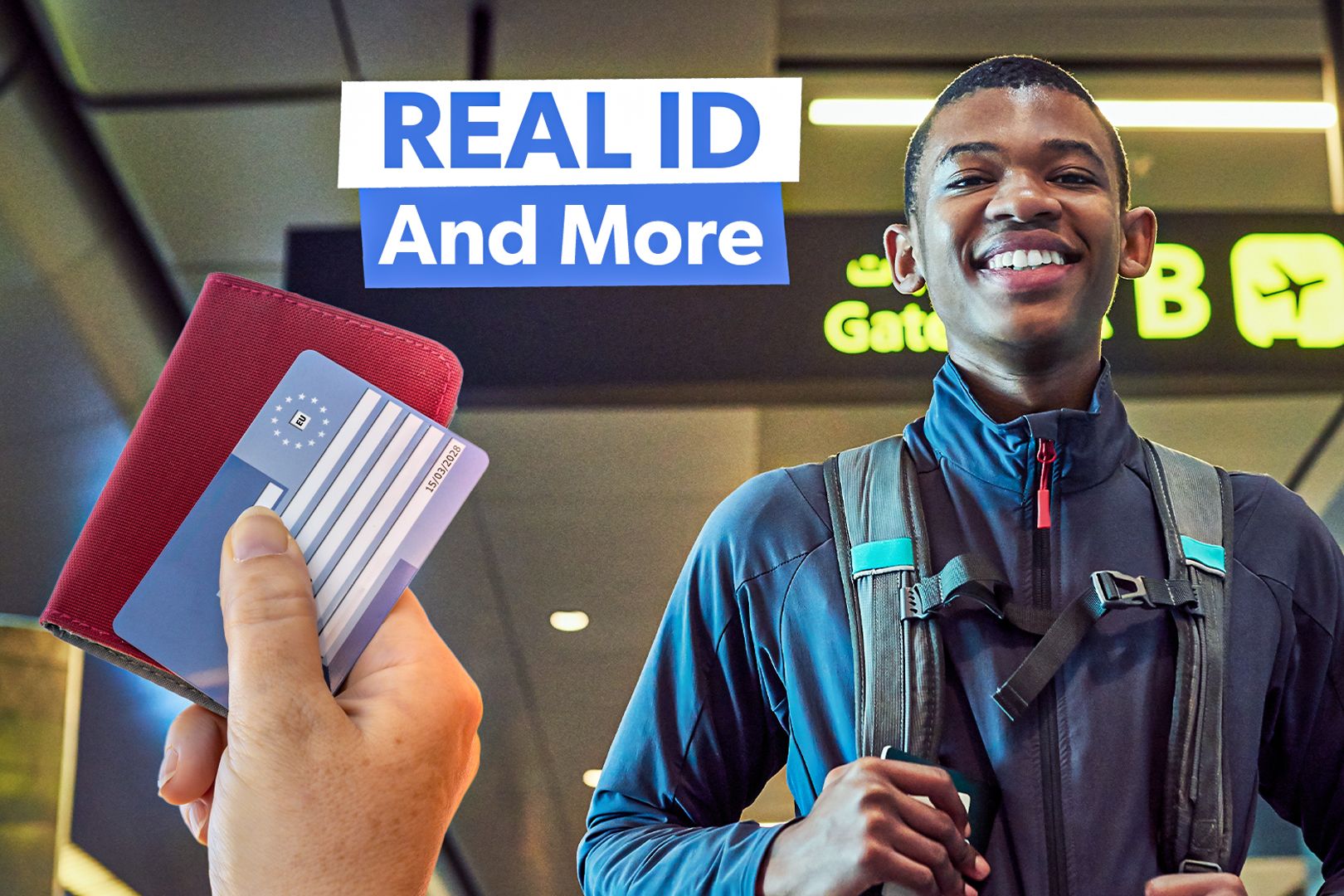Summary TSA accepts various ID forms, including state-issued IDs, US passports, and trusted traveler cards. Expired IDs are accepted up to a year after expiration, and children under 18 are exempt from providing ID. A REAL ID-compliant driver's license or ID card is required for domestic flights starting May 7, 2025.
Flying within the United States is relatively simple because the Transportation Security Administration (TSA) accepts an ordinary US driver's license or other valid identification forms rather than just a US passport. Of course, flying internationally always requires a valid US passport. Acceptable ID forms Passengers flying within the US can show various ID forms at TSA checkpoints.

According to the TSA, these forms include: State-Issued Driver's License or State-Issued ID card US passport US passport card DHS trusted traveler cards (Global Entry, NEXUS, SENTRI, FAST) US Department of Defense ID, including IDs issued to dependents Permanent resident card Border crossing card An acceptable photo ID issued by a federally recognized Tribal Nation or Indian Tribe HSPD-12 PIV card Foreign government-issued passport Canadian provincial driver's license or Indian and Northern Affairs Canada card Transportation worker identification credential US Citizenship and Immigration Services Employment Authorization Card (I-766) US Merchant Mariner Credential Veteran Health Identification Card (VHIC) Notably, the TSA currently accepts expired IDs for the above-listed forms of identification up to a year after expiration. Children under 18 are not required to provide identification when boarding a flight within the US. TSA notes that "a weapon permit is not an acceptable form of identification.
A temporary driver's license is not an acceptable form of identification." However, it is worth noting that specific identification rules are about to change very soon. US domestic fliers will need to get REAL ID-compliant documentation before the Department of Homeland Security's (DHS) new policies go into effect.
Here's what to do if you've forgotten or misplaced your passport and driver's license. What is a REAL ID? Starting May 7, 2025, all adult travelers 18 and older must have a REAL ID-compliant driver's license or ID card to board domestic flights and enter secure federal facilities, such as nuclear power plants, military bases, federal courthouses, and others. A REAL ID can be identified by a star marking in the top right corner of the license or ID card.
The star colors can be different depending on the state. Below, find a photo example from the California DMV website : The REAL ID Act was introduced and passed by Congress in 2005. It suggested that the federal government should set increased standards for issuing secure identification, like driver's licenses and ID cards.
To put it simply, it was designed to reduce identity fraud. Indeed, this recommendation was made after the deadly terrorist attacks on September 11, 2001, when two aircraft were deliberately crashed into the Twin Towers of the World Trade Center . The deadline for REAL ID compliance has been postponed multiple times since the original target in 2008.
Most recently, it was delayed again at the end of 2022, with the DHS citing the effects of the global COVID-19 pandemic as one of the reasons for the extension. How to get one? Getting REAL ID-compliant documentation is relatively straightforward, as all US states issue these IDs through driver's licensing agencies, the Department of Motor Vehicles (DMV). Visit the DHS website to learn about the specific requirements in your state.
Select your state of residence to find detailed instructions on how to apply and a list of documents you need to bring to your appointment. The DHS also provides a helpful map on its website with links to the DMV for every US state. Boarding international flights All travelers must have a valid US passport when boarding an international flight.
No other form of identification will be accepted. In addition to the passport, all travelers must check if they need any additional documentation, including: A visa Visa-on-arrival An immunization document Additional medical information A bank statement Other applications It is worth noting that additional documentation depends on a country-to-country basis. This article examines what crewmember visas for entering the United States permit and restrict.
World's most powerful passports The Henley Passport Index is the authoritative ranking of all the world's passports based on the number of destinations their holders can access without a prior visa. Each year, it ranks the world's most powerful passports. According to the 2024 global ranking, Singapore's passport is once again considered the most powerful in the world, making Singaporeans the world's most privileged travelers.
It allows visa-free entry to 195 destinations out of 227 worldwide. Four European countries, including Spain, Italy, France, and Germany, alongside Japan, claimed the second spot on the global passport ranking, with each country having 192 visa-free destinations. Meanwhile, the United States passport ranks eighth on the 2024 global passport ranking.
US passport holders can travel to 186 destinations without any visa requirements. Following closely are Lithuania, Estonia, and the United Arab Emirates (UAE), with a total of 185 visa-free destinations. Henley & Partners, a global citizenship and residence advisory firm, ranks the world's 199 passports using data from the International Air Transport Association ( IATA ).
The index has been updated quarterly for the past 19 years. Qualifying US citizens can renew their passports online by following quick, simple steps..



















